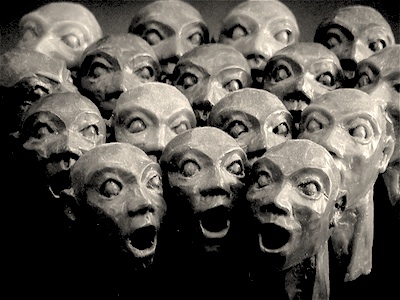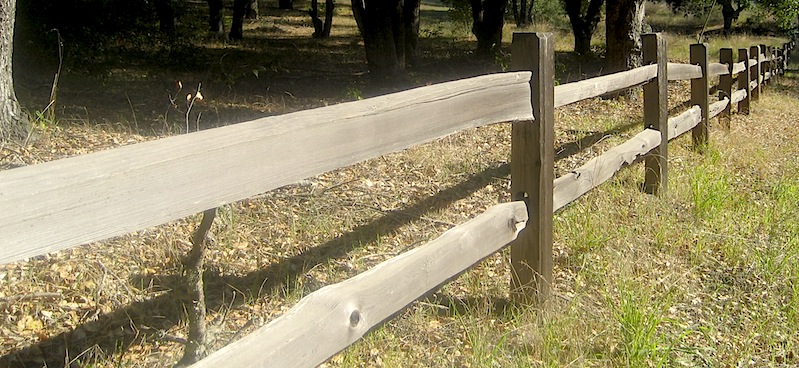Finding Your Audience
When we interviewed Randy Stromsoe for last week's installment of OTL, we wrapped up with a question that we ask every time we interview an artist.
What would you tell somebody that’s just breaking in and trying to make an art career happen?
We always get interesting answers to that question, and what Randy had to say was no exception.
"I think I’d find what show fits your work. It’s easy to get excited if you have an arena where they like your work and you’re a celebrity. If I just tried to make it in Cambria or San Luis Obispo, I would have been so frustrated. If I never took a chance and went to the East Coast then my life wouldn't have worked out. You have to find these arenas and so much of it is word of mouth by talking to other artists and looking at their brochures and what work they’ve pushed before...
Some areas sell a lot of what we do. If I go back to Philadelphia to the Museum of Art's Craft Show I have more buyers than anywhere else. They also promoted me more than anywhere else. That show has been really good to me and the people who go to those shows have bought a lot."

The natural inclination of most of us is to start small, start local, and build up and out from there. That intuition works for a florist shop or a jeweler or a service business like swimming pool service, dry cleaning, or auto repair. But art is a little different from most other businesses. An artist is working with a product that has very specialized and intangible appeal. There are regional differences in taste and interest, and the general public in most towns has little understanding of the pricing and value of art.
Add to this the fact that many of us as artists choose to live where our environment is conducive to our creativity rather than where our natural market is. Windhook, for example, is on the central coast of California in one of the most amazing geographies and climates that we know of. We located here because the creative energy of the place works for us. But San Luis Obispo County is not a major art center. We do have several good art organizations here, and a higher than average concentration of good artists than many places of comparable size. But this does not equate to a local art market strong enough to support all those good artists.
Of course this is not to suggest that you ignore your local market. There are those who really like the idea of local art and will seek out local artists to add to their collections. The point here is that in most locations, the market specifically for local art is small, and if it is your whole strategy, you are probably going to be disappointed.
Randy's admonition to look for your clientele where they are rather than where you are is spot on. If your studio is in a major metropolitan art center, like New York, Chicago or Los Angeles, you might be able to go with the local market approach. But even that is not sure-fire. It may well be that your creative vision and technique are not the best match for the art buying community in even a large city. You will probably find some kindred spirits in your city, but it might be that a different region or metropolitan center would be more inspired by your work than the one you work in. You will still need to apply this principle within those big art centers, and would do well to look beyond their reach for other opportunities.

Randy's comment unearthed a very important and valuable strategy for locating your market. Look far and wide for artist peers—people doing and selling work that is similar in style and character to your own— and target the same regions and venues that are working for them.
This approach sounds on the surface like it would result in market saturation, but that's not how it works in art. Rather than saturation, what happens is a snowball effect. Simply put, the bigger a venue gets, the bigger it gets, and the better it is equiped to serve those who value it. What actually happens is that the more consistent and exhaustive the focus of a venue is for a specific kind of work, the more that venue gets the attention of art patrons interested in that style. It's one of those things where a rising tide really does lift all boats. Exposure is always good for artists, but the best exposure is to the people who really like and buy the kind of work you do. So one important key to the kind of success that Randy has enjoyed for 40 years is to do your research and find those people. Scour the journals, work the internet and the social networks, and by all means, here's your excuse for a road trip! But however you go about it, follow Timothy Leary's admonition to "find the others".
Galleries and Artist's Reps
A month ago, Kenny Endo talked about his experience with and without an agent. He spent quite a few years without an agent, and at times found that the relationship with an agent was difficult. But recently he has had an agent who's a good fit for him and his comment was that "if you have a good agent, they have access to more markets than you would as an artist." This comment bears directly on the issue of finding your market. In his interview this month, Randy Stromsoe suggested looking at and talking to other artists whose work relates well to yours to find show venues that are a good match for your work. We would also add to that the idea of getting insight from other artists on galleries, agents, and artist's representatives.
While there are downsides to these relationships, most notably relating to cost, they can work wonders for your ability to find buyers for your work. Some successful artists would not be caught dead without such a relationship.

There is a bit of a chicken and egg problem related to artist representation that we should discuss right up front though. Most galleries and artist reps, being sales driven businesses, will be more interested in working with you if you already have a proven sales record with your work. But you are more likely to have such a track record if you have effective representation. If you are too new a talent, and don't have such credentials, you might not be ready for these professionals to be interested yet. We will talk in future installations of OTL about the challenges of the green rookie.
Galleries differ from artist's reps in that a gallery is a brick and mortar business focused on bringing buyers through the door. Artist's reps, on the other hand, bring your work to the buyer wherever they are. A gallery is geographically bound, while an artist's rep is not. This distinction is very important in light of the discussion above about finding your market. If you have not found the right market in which to optimally sell your work, it might be premature to seek a gallery. If this is the case, you would spend your money more wisely with an artist's rep who has a good grasp of the national or international art scene and its regional nuance than with a gallery. On the other hand, a gallery in the right location could be your best bet once you determine what that right location is.
We mentioned a moment ago that the biggest downside to artist representation, whether with a gallery or an agent, is cost. Typically you'll pay up to half of your retail price back to a gallery and at least 25% to an artist's rep. If you have not found the right market, where your art can command such prices, that can be back breaking to your bottom line. This is why it's important to find the sales professional for your work who can find a venue that will support their cost. Beware of cut rates and glowing promises. You generally get what you pay for. But if you choose this relationship well, and it results in you finding your natural market, you'll probably end up happy with the relationship, the increased sales, and your bottom line.
There are other potential downsides to artist representation as well. Not all artist's representatives (we are talking about reps and galleries here) are created alike. Some are better than others, ranging from high energy sales engines to glorified delivery services. Misunderstandings and mismatched expectations between artist and representative, personality conflicts, and the resulting disillusionment and alienation are all very real possibilities. Add to that the fact that there really aren't enough artist's reps and galleries to go around, and the whole proposition can be pretty tricky.
It's critical as you make these decisions about seeking representation, that you keep your eye on the goal—greater demand for your work. Be careful not to sign a long term exclusive contract with an artist's rep or gallery unless there is a clause in the contract that binds the commitment to results. Alternately, you could sign a short term or month-to-month contract that allows you to walk if you don't see the results you need. You should do significantly better with the relationship than you would without it if it is going to be worthwhile. You need a way out if the artist's rep doesn't work for you and doesn't generate demand for your work.There should be an adequate grace period for this so that he or she can do the ground work needed to build that demand, but this is a business relationship and should protect both parties. You should know whether you are being represented by an owner, partner, or employee. Are you paying monthly or on commission? Are you expected to pay commissions only on what your agent sells or on all sales of your work from any source? Know the art and educational background and experience of your agent. How does he or she talk about art, and more specifically about your art? Specifically, how will they promote your work? Ask for references and know the reputation of the sales professional with his or her existing and past clients. But don't leave it at that. Make sure that your contract has clear terms and well defined expectations for both you and your agent. As our ranch neighbors at Windhook are fond of saying, "Good fences make good neighbors."

|






